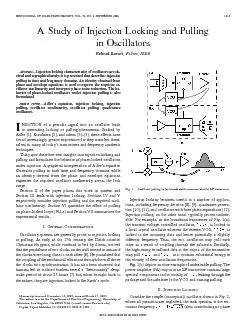

Fig1OscillatorpullinginabroadbandtransceiverandbRFtransceiverInjectionlockingbecomesusefulinanumberofapplicationsincludingfrequencydivision89quadraturegeneration1011andoscillator ID: 147122
Download Pdf The PPT/PDF document "IEEEJOURNALOFSOLID-STATECIRCUITS,VOL.39,..." is the property of its rightful owner. Permission is granted to download and print the materials on this web site for personal, non-commercial use only, and to display it on your personal computer provided you do not modify the materials and that you retain all copyright notices contained in the materials. By downloading content from our website, you accept the terms of this agreement.
IEEEJOURNALOFSOLID-STATECIRCUITS,VOL.39,NO.9,SEPTEMBER2004AStudyofInjectionLockingandPullinginOscillatorsBehzadRazavi,Fellow,IEEEInjectionlockingcharacteristicsofoscillatorsarede-rivedandagraphicalanalysisispresentedthatdescribesinjectionpullingintimeandfrequencydomains.Anidentityobtainedfromphaseandenvelopeequationsisusedtoexpresstherequisiteos-cillatornonlinearityandinterpretphasenoisereduction.Thebe- Fig.1.Oscillatorpullingin(a)broadbandtransceiverand(b)RFtransceiver.Injectionlockingbecomesusefulinanumberofapplica-tions,includingfrequencydivision[8],[9],quadraturegenera-tion[10],[11],andoscillatorswith nerphaseseparations[12].Injectionpulling,ontheotherhand,typicallyprovesundesir-able.Forexample,inthebroadbandtransceiverofFig.1(a), ,islockedtoalocalcrystaloscillatorwhereasthereceiveVCO, ,islockedtotheincomingdataandhencepotentiallyaslightlydifferentfrequency.Thus,thetwooscillatorsmaypulleachotherasaresultofcouplingthroughthesubstrate.Similarly,thehigh-swingbroadbanddataattheoutputofthetransmittermaypull and asitcontainssubstantialenergyinthevicinityoftheiroscillationfrequencies.Fig.1(b)depictsanotherexampleofundesirablepulling.Thepowerampli er(PA)outputinanRFtransceivercontainslargespectralcomponentsinthevicinityof ,leakingthroughthepackageandthesubstratetotheVCOandcausingpulling.II.I (thuscontributingnophase0018-9200/04$20.00©2004IEEE IEEEJOURNALOFSOLID-STATECIRCUITS,VOL.39,NO.9,SEPTEMBER2004 Fig.2.(a)Conceptualoscillator.(b)Frequencyshiftduetoadditionalphaseshift.(c)Open-loopcharacteristics.(d)Frequencyshiftbyinjection.shift),andtheidealinvertingbufferfollowsthetanktocreateatotalphaseshiftof360 aroundthefeedbackloop.Whathap-pensifanadditionalphaseshiftisinsertedintheloop,e.g.,asdepictedinFig.2(b)?Thecircuitcannolongeroscillateat becausethetotalphaseshiftatthisfrequencydeviatesfrom360 by .Thus,asillustratedinFig.2(c),theoscillationfrequencymustchangetoanewvalue suchthatthetankcontributesenoughphaseshifttocanceltheeffectof .Notethat,ifthebufferand contributenophaseshift,thenthedraincurrent mustremaininphasewith underallcondi-Nowsupposeweattempttoproduce asinu-soidalcurrenttothedraincurrentof [Fig.2(d)].Iftheam-plitudeandfrequencyof arechosenproperly,thecircuitin-deedoscillatesat ratherthanat andinjectionlockingoccurs.Underthiscondition, and bearaphasedifference[Fig.3(a)]because:1)thetankcontributesphaseat ,rotating withrespecttotheresultantcurrent, ,and2) stillremainsinphasewith andhenceoutofphasewithrespectto ,requiringthat formanangle .(If and wereinphase,then wouldalsobeinphasewith andthuswith ).Theangleformedbe- and issuchthat becomesalignedwith (and )afterexperiencingthetankphaseshift, ,at Inordertodeterminethelockrange(therangeof whichinjectionlockingholds),weexaminethephasordiagramofFig.3(a)as departsfrom .Tomatchtheincreasinglygreaterphaseshiftintroducedbythetank,theanglebetween and mustalsoincrease,requiringthat rotatecoun-terclockwise[Fig.3(b)].Itcanbeshownthat (1) (2) Fig.3.Phasedifferencebetweeninputandoutputfordifferentvaluesof �! jandI whichreachesamaximumof (3)if DepictedinFig.3(c),theseconditionstranslatetoa90 betweentheresultantand ,implyingthatthephasediffer-encebetweenthe ,andtheoutput, ,reachesamaximumof .Tocomputethevalueof cor-respondingtothiscase,werstnotethatthephaseshiftofthetankinthevicinityofresonanceisgivenby(SectionIII-A) andrecognizefromFig.3(c)that and .Itfollowsthat (Thisresultisobtainedin[3]usingadifferentapproach.)Wedenotethismaximumdifferenceby ,withtheunderstandingthattheoveralllockrangeisinfact around Thedependenceofthelockrangeupontheinjectionlevel, ,istobeexpected:if decreases, mustformagreateranglewith soastomaintainthephasedifferencebetween and at [Fig.3(d)].Thus,thecircuitmovesclosertotheedgeofthelockrange.Asaspecialcase,if ,then(2)reducesto Wecall lockrange. RAZAVI:STUDYOFINJECTIONLOCKINGANDPULLINGINOSCILLATORS Fig.4.Phaseshiftinaninjection-lockedoscillator.implyingthat issmalland .Equations(5)and(7)thereforegive fortheinput-outputphasedifferenceacrossthelockrange.AsevidentfromFig.3(c),for thisdifferencereaches attheedgeofthelockrange,aplausibleresultbecauseifthezerocrossingsoftheinputfallonthepeaksoftheoutput,littlephasesynchronizationoccurs.Thelockrangeinthiscasecanbeobtainedfrom(6)or(8): Thesubtledifferencebetween(6)and(9)playsacriticalroleinquadratureoscillators(asexplainedbelow).Fig.4plotstheinput-outputphasedifferenceacrossthelockrange.Incontrasttophase-locking,injectionlockingto mandatesoperationawayfromthetankresonance.1)ApplicationtoQuadratureOscillators:Withtheaidofafeedbackmodel[13]oraone-portmodel[14],itcanbeshown(unilateral)couplingoftwoidenticaloscillatorsforcesthemtooperateinquadrature.Itcanalsobeshown[14]thatthistypeofcoupling(injectionlocking)shiftsthefrequencyfromresonancesothateachtankproducesaphaseshiftof (10)where denotesthecurrentinjectedbyoneoscillatorintotheotherand isthecurrentproducedbythecoreofeachoscillator.Useof(5)thereforegivestherequiredfrequencyshift Interestingly,(9)wouldimplythateachoscillatorispushedtotheedgeofthelockrange,but(6)suggeststhatfor,say, Fig.5.(a)Injection-lockeddivider.(b)Equivalentcircuit. ,thelockrangeexceeds(9)by3.3%.Inotherwords,fora90 phasedifferencebetweenitsinputandoutput,aninjection-lockedoscillatorneednotoperateattheedgeofthelockrange.2)ApplicationtoDividers:Fig.5(a)showsaninjec-tion-lockedoscillatoroperatingasa stage[15].Whilepreviousworkhastreatedthecircuitasanonlinearfunctiontoderivethelockrange[15],itispossibletoadoptaviewtosimplifytheanalysis.Switchingatarateequaltotheoscillationfrequency, and formamixerthattranslates to ,withthesumcomponentsuppressedbythetankselectivity.Thus,asdepictedinFig.5(b),injectionof at intonode isequivalenttoinjectionof (where isthemixerconversiongain)at directlyintotheoscillator.If and switchabruptlyandthecapacitanceat isneglected,then ,and(9)canbewrittenas Ifreferredtotheinput,thisrangemustbedoubled: rmedbysimulations,(13)representstheupperboundonthelockrangeofinjection-lockeddividers.III.IIftheinjectedsignalfrequencyliesoutof,butnotveryfarfromthelockrange,theoscillatorisWestudythisbehaviorbycomputingtheoutputphaseofanoscillatorunderlow-levelinjection.A.PhaseShiftThroughaTankForsubsequentderivations,weneedanexpressionforthephaseshiftintroducedbyatankinthevicinityofresonance.Asecond-orderparalleltankconsistingof , ,and exhibitsaphaseshiftof (14) IEEEJOURNALOFSOLID-STATECIRCUITS,VOL.39,NO.9,SEPTEMBER2004 ,and ,wehave Ifthecurrentowingthroughthetankcontainsphasemodula-tion,i.e., ,thenthephaseshiftcanbeobtainedbyreplacing in(15)withtheinstantaneousinputfre-quency, : Validfornarrow-bandphasemodulation(slowly-varying thisapproximationholdswellfortypicalinjectionphenomena.B.OscillatorUnderInjectionConsiderthefeedbackoscillatorysystemshowninFig.6,wheretheinjectionismodeledasanadditiveinput.Theoutputisrepresentedbyaphase-modulatedsignalhavingacarrierfre-quencyof (ratherthan ).Inotherwords,theoutputisassumedtotracktheinputexceptfora(possiblytime-varying)phasedifference.Thisrepresentationisjustiedlater.Theob-jectiveistocalculate ,subjectittothephaseshiftofthetank,andequatetheresultto Theoutputoftheadderisequalto (17) Thetwotermsin(18)cannotbeseparatelysubjectedtothetankphaseshiftbecausephasequantitiesdonotsatisfysuperpositionhere.Thus,theright-handsidemustbeconvertedtoasinglesinusoid.Factoring andde wewrite (20)Since and ,wehave andhence Upontravelingthroughthetank,thissignalexperiencesaphaseshiftgivenby(16): (22) Fig.6.oscillatorunderinjection.Equatingthisresultto ,weobtain Wealsonotefrom(19)that (24) (25) Itfollowsfrom(23),(24),and(26)that (27) OriginallyderivedbyAdler[1]usingasomewhatdifferentap-proach,thisequationservesasaversatileandpowerfulexpres-sionforthebehaviorofoscillatorsunderinjection.Underlockedcondition, ,yieldingthesameresultasin(9)forthelockrange.If ,theequationmustbesolvedtoobtainthedependenceof upontime.Notethat istypicallyquitesmallbecause,from(28),itreachesamaximumofonly .Thatis, variesslowlyunderpullingconditions.sequationcanberewrittenas Notingthat ,makingachangeofvariable ,andcarryingouttheinte-gration,wearriveat (30)where Thispaperintroducesagraphicalinterpretationofthisequationthatconfersinsightintothephenomenonofinjectionpulling.Interestingly, isequaltothegeometricmeanof +! �! differencebetween andtheupperendofthelockrange)and �! �! (thedifferencebetween andthelowerendofthelockrange). RAZAVI:STUDYOFINJECTIONLOCKINGANDPULLINGINOSCILLATORS Fig.7.Phasevariationofaninjection-pulledoscillator.C.Quasi-LockLetusrstexaminetheaboveresultforaninputfrequencyjustbelowthelockrange,i.e., but .Underthiscondition, isrelativelysmall,andtheright-handsideof(30)isdominatedbytherstterm solongas islessthanone,approachingalargemagnitudeonlyforashortduration[Fig.7(a)].Notingthatthecyclerepeatswithaperiodequalto ,weplot asshowninFig.7(b).Thekeyobservationhereisthat isnear90 mostofthetimeasiftheoscillatorwereinjection-lockedtotheinputattheedgeofthelockrange.Attheendofeachperiodandthebeginningofthenextperiod, undergoesarapid360 andreturnstothequasi-lockcondition[Fig.7(c)].Wenowstudythespectrumofthepulledoscillator.Thespec-trumhasbeenanalyticallyderivedusingdifferenttechniques[4],[5],butadditionalinsightcanbegainediftheresultsinFig.7areutilizedasthestartingpoint.Thefollowingobser-vationscanbemade.1)Theperiodicvariationof atarateof impliesthattheoutputbeatswiththeinput,exhibitingside-bandswithaspacingof .Notethat isafunctionofboth and (andhencetheinjectionlevel).2)Sincetheoscillatorisalmostinjection-lockedtotheinputforalargefrac-tionoftheperiod,weexpectthespectrumtocontainsignienergyat RedrawingFig.7(b)withthemodulo- transitionsattheendofeachperiodremoved[Fig.8(a)]andwritingtheinstantaneous Fig.8.Instantaneousfrequencyandspectrumofaninjection-pulledoscillator.frequencyoftheoutputas weobtaintheresultdepictedinFig.8(b).Theinterestingpointhereisthat,for thelockrange,theinstantaneousfrequencyoftheoscillatorgoesonlyabove ,exhibitingapeakvalueof asobtainedfrom(28).Thatis,theoutputspectrumcontainsmostlysidebandsabove Wenowinvokeausefulobservationthattheshapeofthespec-trumisgivenbytheprobabilitydensityfunction(PDF)oftheinstantaneousfrequency[16].ThePDFisqualitativelyplottedinFig.8(c),revealingthatmostoftheenergyisconnedtotherange andleadingtotheactualspectruminFig.8(d).Themagnitudeofthesidebandsdropsapproximatelylinearlyonalogarithmicscale[4],[5].Isitpossibleforoneofthesidebandstofallatthenaturalfrequency, ?Thefollowingmusthold: ,where isaninteger.Thus, .Since isoutofthelockrange,theleftsideofthisequationexceedsunityandnovalueof canplaceasidebandat .Wethereforesaytheoscillatorisfromitsnaturalfrequency.This IEEEJOURNALOFSOLID-STATECIRCUITS,VOL.39,NO.9,SEPTEMBER2004 Fig.9.Pullingbehaviorforinjectionsomewhatfarfromthelockrange.alsojustiestheuseof ratherthan forthecarrierfrequencyoftheoutputinFig.6.D.FastBeatItisinstructivetoexaminetheresultsobtainedaboveas deviatesfartherfromthelockrangewhileotherparametersre-mainconstant.Rewriting(30)as werecognizethattheverticaloffsetdecreaseswhereastheslopeofthesecondtermincreases.Theright-handsidethereforeap-pearsasdepictedinFig.9(a),yieldingthebehaviorshowninFig.9(b)for .Thus,comparedtothecaseillustratedinFig.7:1)thebeatfrequencyincreases,leadingtoawiderseparationofsidebands;2) staysrelativelyconstantforashorterpartoftheperiodandexhibitsafastervariationatthebeginningandend;and3)theinstantaneousfrequencyisnear forashorterdu-ration[Fig.9(c)],producingasmallerspectrallineatthisfre-quency.Infact,if issufcientlyfarfrom ,theenergyat Fig.10.One-portrepresentationofanoscillatorunderinjection. fallsbelowthatatthenextsideband [Fig.9(d)].Eventually,thecomponentsat and haveapprox-imatelyequallevels[4],[5].Interestingly,theanalysesin[4]and[5]onlyrevealthespec-truminFig.9(d).Ontheotherhand,theapproachpresentedhere,particularlytheuseofthePDFoftheinstantaneousfre-quency,correctlypredictsbothquasi-lockandfastbeatcondi-Inquadratureoscillators,pullingmayoccurifthefrequencymismatchbetweenthetwocoresexceedstheinjectionlockrange.Withinsufcientcoupling,theoscillatorsdisplayabehaviorsimilartothatdepictedinFigs.7and9.Notethattheresultingsidebandsareduetointermodulationbetweenthetwooscillatorsignals.Forexample,thespacingbetweenthesidebandsisafunctionofthecouplingfactor.IV.REQUISITESCILLATOROuranalysisofinjectionlockingandpullinghasthusfarig-norednonlinearitiesintheoscillator.Whilethismayimplythatcanbeinjectionpulledorlocked,weknowfromthesuperpositionprinciplethatthiscannothappen.Specif-ically,alinearoscillatorwouldsimplygenerateasinusoidat inresponsetoaninitialconditionandanotherat isresponsetotheinput.Toresolvethisparadox,wereexaminetheoscilla-torysystemunderinjection,seekingitsenvelopebehavior.Inthiscase,itissimplertomodeltheoscillatorasaone-portcircuitconsistingofaparalleltankandamildlynonlinearnegativeconductance(Fig.10),where representsthelossofthetank.Forexample, andtheinvertingbufferinFig.2(a)constituteanegative cell.Inthiscircuit Nowletusassume and ,where denotestheenvelopeoftheoutput.Substitutingtheexponentialtermsin(32)andseparatingtherealandimaginaryparts,wehave (33) Alinearoscillatorcanbedenedasoneinwhichtheloopgainisexactlyunityforallsignallevels. RAZAVI:STUDYOFINJECTIONLOCKINGANDPULLINGINOSCILLATORSTosimplifytheseequations,weassume:1)theenvelopevariesslowlyandbyasmallamount;2)themagnitudeoftheenvelopecanbeapproximatedasthetankpeakcurrentproducedbythe circuit, ,multipliedbythetankresistance ;3) ;4) whereapplicable;and5)thephaseanditsderivativesvaryslowly.Equations(33)and(34)thusreduceto (35) rstisAdlersequation,whereasthesecondexpressesthebehavioroftheenvelope.Todevelopmoreinsight,letusstudytheseresultswithinthelockrange,i.e.,if .Writing givesthefollowingusefulidentity: For thatis,thecircuitrespondsbyweakening circuit(i.e.,allowingmoresaturation)becausetheinjectionaddsin-phaseenergytotheoscillator.Ontheotherhand,for wehave ,asifthereisnoinjection.Fig.11illustratesthebehaviorof acrossthelockrange.Whilederivedforamildly-nonlinearoscillator,theabovere-sultdoessuggestageneraleffect:theoscillatormustspendlesstimeinthelinearregimeas movescloserto oscillatorthereforedoesnotinjectionlock.V.PThephasenoiseofoscillatorscanbereducedbyinjectionlockingtoalow-noisesource.Fromatime-domainperspective,effectofinjectionmanifestsitselfascor-rectionoftheoscillatorzerocrossingsineveryperiod,therebyloweringtheaccumulationofjitter.Thisviewpointalsorevealsthatthereductionofphasenoisedependsontheinjectionlevel,anditreachesamaximumfor [Fig.12(a)](wherethezerocrossingsof greatlyimpactthoseof )andamin-imumfor [Fig.12(b)](wherethezerocrossings coincidewiththezero-slopepointson Usingtheone-portmodelofFig.10andtheidentityex-pressedby(38),wecanestimatethephasenoisereductioninamildlynonlinearoscillatorthatisinjection-lockedtoanoiselesssource.AsdepictedinFig.13,thenoiseofthetankandthe cellcanberepresentedasacurrentsource .Intheabsenceofinjection,the(average)valueof cancels ,and experiencesthefollowingtransimpedance: (39) Fig.11.Variationof acrossthelockrange. Fig.12.Conceptualillustrationofeffectofinjectionlockingonjitter(a)inthemiddleand(b)attheedgeofthelockrange. Fig.13.Modelforstudyingphasenoise. isampliedbyanincreasinglyhighergainasthenoisefrequencyapproaches Nowsupposeaniteinjectionisappliedatthecenterofthelockrange, .Then,(38)predictsthattheoveralltankadmittancerisesto .Inotherwords,thetankimpedanceseenby at fallsfrominnity(withnoinjection)to underinjectionlocking.Asthefre-quencyof deviatesfrom continuestodom-inatethetankimpedanceuptothefrequencyoffsetatwhichthephasenoiseapproachesthatofthefree-runningoscillator(Fig.14).Todeterminethispoint,weequatethefree-runningnoiseshapingfunctionof(39)to andnotethat and Thus,thefree-runningandlockedphasenoiseprolesmeetattheedgesofthelockrange.Forverysmallfrequencyoffsets,thenoiseshapingfunctionassumesaLorentzianshapeandhenceanitevalue. IEEEJOURNALOFSOLID-STATECIRCUITS,VOL.39,NO.9,SEPTEMBER2004AsillustratedinFig.12(b),iftheinputfrequencydeviates ,theresultingphasenoisereductionbecomeslesspro-nounced.Infact,as approacheseitheredgeofthelock dropstozero,raisingtheimpedanceseenbythenoisecurrent.InCMOStechnology,itisdifculttorelyonthephasenoisereductionpropertyofinjectionlocking.Sincethelockrangeistypicallyquitenarrowandsincethenaturalfrequencyofoscil-latorsincurssignicanterrorduetoprocessvariationsandpoormodeling,thelockingmayoccurneartheedgeofthelockrange,therebyloweringthephasenoiseonlyslightly.Forexample,ifthetwo-sidedlockrangeisequalto %andthenaturalfre-quencyoftheoscillatorvariesby %withprocessandtem-perature,then,intheworstcase,theinjectionlockingoccursat .Itfollowsfrom(37)andtheaboveobser-vationsthattheimpedanceseenbythenoisefallsfromin ,yieldinga4.4-dBdegradationinthephasenoisecomparedtothecaseof VI.IULLINGINSCILLATORSTheanalysisinSectionIIIdealswithpullinginnominallyfree-runningoscillators,ararecaseofpracticalinterest.Sinceoscillatorsareusuallyphase-locked,theanalysismustaccountforthecorrectionpoducedbythePLL.Inthissection,weas-sumetheoscillatorispulledbyacomponentat whilephase-lockedsoastooperateat .Wealsoassumethattheoscillatorcontrolhasagainof andcontainsasmallperturbation, ,aroundadclevel.ExaminingthederivationsinSectionIIIforaVCO,weob-servethat(19)and(21)remainunchanged.In(22),ontheotherhand,wemustnowadd to .Forsmallpertur- canbeneglectedinthedenominatorof and Equatingthephaseof(41)to andnotingthat(24)and(26)canbeshowntostillhold,wehave Fig.15showsaPLLconsistingofaphase/frequencydetector(PFD),achargepump(CP),andalow-passlter( and andtheVCOunderinjection.Sincewithalowinjectionlevel,thePLLremainsphase-lockedto ,itismoremeaningfultoexpresstheoutputphaseas ratherthan .Thus, and (43) whereitisassumed radian.Thisapproximationisrea-sonableifpullingdoesnotexcessivelycorruptthePLLoutput. Fig.14.Reductionofphasenoiseduetoinjectionlocking. Fig.15.PLLunderinjectionpulling.TheaboveresultcannowbeusedinaPLLenvironment.InFig.15,thePFD,CP,andloopltercollectivelyprovidethefollowingtransferfunction: wherethenegativesignaccountsforphasesubtractionbythePFD.Wethereforehave Substitutingfor in(44)anddifferentiatingbothsideswithrespecttotime,weobtain (47)where .ThisrevealsthatthePLLbehavesasasecond-ordersysteminitsresponsetoinjectionpulling. (48) wehave (50)where denotesthephaseofthetransferfunctionatafrequency Adual-loopmodeldevelopedbyA.Mirzaeiarrivesatasimilarresultbutwithadifferentvalueforthepeakamplitudeofthecosine[17]. RAZAVI:STUDYOFINJECTIONLOCKINGANDPULLINGINOSCILLATORS Fig.16.(a)VCO.(b)Diephotograph. Fig.17.Measuredspectrumoffree-runningoscillatorunderinjection.(a)Quasi-lock.(b)Fastbeat. Fig.18.Measuredspectrumof(a)free-runningoscillatorunderinjection,and(b)phase-lockedoscillatorunderinjection.Equation(50)leadstoseveralinterestingandimportantobservations.First,theVCOoutputphaseismodulated,therebycreatingonlytwosymmetricsidebands(forlowinjection).Thesidebandsresideat ,i.e.,at and .Second,(46)suggeststhatthecontrolvoltagealsovariessinusoidallyatafrequencyof ,possiblyservingasapointformonitoringthestrengthofpulling.Third,thepeakvalueof in(50)andhencethesidebandmagnitudesvarywith ;infact,theyapproachzeroforboth and ,assumingapeakinbetween.ThisisbecausethePLLsuppressestheeffectofpullingif iswellwithintheloopbandwidthandtheoscillatorpullingbecomeslesssignicantif islarge.Thebandpassbehaviorofthepeakphasein(50)standsinsharpcontrasttotheresponseofPLLstophaseattheoutputoftheVCO.Forexample,theVCOphasenoiseexperi-encesahigh-passtransfertotheoutput.ThesymmetryofsidebandscanalsobeinterpretedwiththeaidoftherelationshipbetweentheshapeofthespectrumandthePDFoftheinstantaneousfrequency, .Ifthesidebandswere IEEEJOURNALOFSOLID-STATECIRCUITS,VOL.39,NO.9,SEPTEMBER2004 Fig.19.Measuredproleofsidebands.asymmteric,sowouldthePDFof be.Thatis, wouldspendmoretimeatoneofitsextremes.ThePLLwouldthenapplyagreatercorrectionatthatextreme,eventuallycreatingasymmetricspectrum.Theforegoinganalysisassumesarst-orderlooplterandcontinuous-timeloopoperation.Theadditionofasecondca-pacitorfromtheoscillatorcontrollinetogroundandthedis-crete-timenatureoftheloopleadtosidebandmagnitudesthataresomewhatdifferentfromthosepredictedby(50).Forthisreason,circuitsimulationsareoftennecessarytodeterminethesidebandlevelsaccurately.VII.EXPERIMENTALESULTSA1-GHzcharge-pumpphase-lockedloopincludinga cir-cuithasbeendesignedandfabricatedin0.35- mCMOStech-nology.Fig.16(a)showstheoscillatorandthemethodofin-jection,withthetransistorwidthsshowninmicrons(thelengthsareequalto0.35 m),andFig.16(b)depictsthediephoto.Thedistinctionbetweenquasi-lockandfastbeatcasesisdemonstratedinthespectraofFig.17forthefree-runningoscil-lator.Here,theinjectedlevelisapproximately38dBbelowtheoscillationlevelandthelockrangeisequalto 1.5MHz.In-deed,forinjection110kHzoutsidethelockrange,[Fig.17(a)],thesidebandat displaysthelargestmagnitude.As furtherdeviatesfromthelockrange(710kHzoutsidethelockrange),thecomponentat becomesdominant.Fig.18(a)and(b)comparestheoutputspectrumbeforeandafterphase-locking,respectively.Here,theinjectedlevelisap-proximately53dBbelowtheoscillationlevel.AstheanalysisinSectionIIIpredicts,thesidebandsbecomesymmetricaftertheloopisclosed.TheleftsidebandinFig.18(b)islocatedat andisslightlylargerthantherightone.Thisisbecause alsofeedsthroughtheoscillatortotheoutput.Inotherwords, ismovedtoabove ,thentherightsidebandbecomeslarger.Measurementsalsoconrmthatthespectrumremainssymmetricevenforaverysmallchargepumpcurrentbutthesidebandsriseinbothmagnitudeandnumber.Fig.19plotstheproleofthesidebandsas variesfrom tolargevalues,conrmingthebandpassbehaviorofpulling.Theseresultsagreewellwithsimulations.Thetheoreticalpre-dictionsoverestimatethepeakofthisprolebyabout7dB.Thisisderivedfromthemeasuredlockrange: =I (! =! [1]R.Adler,Astudyoflockingphenomenainoscillators,Proc.IEEEvol.61,pp.13801385,Oct.1973.[2]K.Kurokawa,Injectionlockingofmicrowavesolid-stateoscillators,Proc.IEEE,vol.61,pp.13361410,Oct.1973.[3]L.J.Paciorek,Injectionlockingofoscillators,Proc.IEEE,vol.53,pp.1727,Nov.1965.[4]H.L.Stover,Theoreticalexplanationoftheoutputspectraofunlockeddrivenoscillators,Proc.IEEE,vol.54,pp.310311,Feb.1966.[5]M.Armand,Ontheoutputspectrumofunlockeddrivenoscillators,Proc.IEEE,vol.59,pp.798799,May1969.[6]A.E.Siegman,Lasers.MillValley,CA:UniversityScienceBooks,[7]R.R.Ward,TheLivingClocks.NewYork:AlfredKnopf,1971.[8]V.Manassewitsch,FrequencySynthesizers,3rded.NewYork:Wiley,[9]E.Normann,Theinductance-capacitanceoscillatorasafrequencydi-vider,Proc.IRE,vol.24,Oct.1946,pp.799[10]C.J.M.Verhoeven,Ahigh-frequencyelectronicallytunablequadratureoscillator,IEEEJ.Solid-StateCircuits,vol.27,pp.10971100,July[11]A.Rofougaranetal.A900MHzCMOSLCoscillatorwithquadratureIEEEISSCCDig.Tech.Papers,Feb.1996,pp.392[12]J.KimandB.Kim,AlowphasenoiseCMOSLCoscillatorwitharingIEEEISSCCDig.Tech.Papers,Feb.2000,pp.430[13]T.P.Liu,A6.5GHzmonolithicCMOSvoltage-controlledoscillator,IEEEISSCCDig.Tech.Papers,Feb.1999,pp.404[14]B.Razavi,DesignofIntegratedCircuitsforOpticalCommunica-.NewYork:McGraw-Hill,2002.[15]H.R.RateghandT.H.Lee,Superharmonicinjection-lockedfrequencydividers,IEEEJ.Solid-StateCircuits,vol.34,pp.813821,June1999.[16]H.E.Rowe,SignalsandNoiseinCommunicationSystems.Princeton,NJ:VanNostrand,1965.[17]A.Mirzaei,privatecommunication. BehzadRazavi03)receivedtheB.Sc.degreeinelectricalengineeringfromSharifUniversityofTechnology,Tehran,Iran,in1985andtheM.Sc.andPh.D.degreesinelectricalengineeringfromStanfordUniversity,Stanford,CA,in1988and1992,respectively.HewasanAdjunctProfessoratPrincetonUniver-sity,Princeton,NJ,from1992to1994,andatStan-fordUniversity,Stanford,CA,in1995.HewaswithAT&TBellLaboratoriesandHewlett-PackardLabo-ratoriesuntil1996.Since1996,hehasbeenAssociateProfessorandsubsequentlyProfessorofelectricalengineeringattheUniversityofCalifornia,LosAngeles.HesitheauthorofPrinciplesofDataConversionSystemDesign(IEEEPress,1995),RFMicroelectronics(PrenticeHall,1998)(alsotranslatedintoJapanese),DesignofAnalogCMOSIntegratedCircuits(McGraw-Hill,2001)(alsotranslatedintoChineseandJapanese),andDesignofIntegratedCircuitsforOpticalCommunications(McGraw-Hill,2003),andtheeditorofMonolithicPhase-LockedLoopsandClockRecoveryCircuitsPress,1996),andPhase-LockinginHigh-PerformanceSystems(IEEEPress,2003).Hiscurrentresearchincludeswirelesstransceivers,frequencysynthe-sizers,phaselockingandclockrecoveryforhigh-speeddatacommunications,anddataconverters.Dr.RazavireceivedtheBeatriceWinnerAwardforEditorialExcellenceatthe1994IEEEInternationalSolid-StateCircuitsConference(ISSCC),thebestpaperawardatthe1994EuropeanSolid-StateCircuitsConference,theBestPanelAwardatthe1995and1997ISSCC,theTRWInnovativeTeachingAwardin1997,andtheBestPaperAwardattheIEEECustomIntegratedCircuitsCon-ferencein1998.Hewastheco-recipientofboththeJackKilbyOutstandingStudentPaperAwardandtheBeatriceWinnerAwardforEditorialExcellenceatthe2001ISSCC.Hehasbeenrecognizedasoneofthetoptenauthorsinthe50-yearhistoryofISSCC.HeservedontheTechnicalProgramCommitteesoftheISSCCfrom1993to2002andtheVLSICircuitsSymposiumfrom1998to2002.HehasalsoservedasGuestEditorandAssociateEditoroftheIEEEOURNALOFTATE,IEEETRANSACTIONSONIRCUITSAND,andtheInternationalJournalofHighSpeedElectronics.HeisanIEEEDistinguishedLecturer.